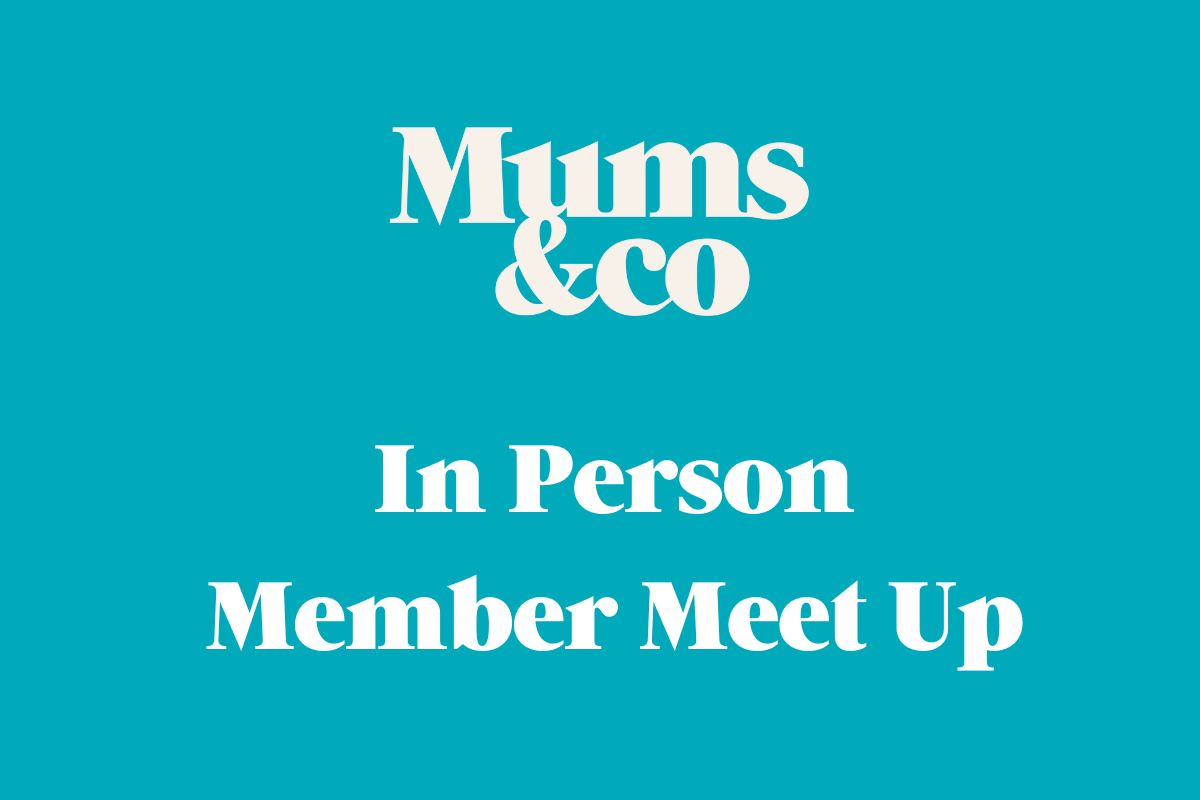What is a Trust Business Structure?
A trust business structure involves a trustee managing assets for beneficiaries' benefit, offering asset protection, income flexibility, and tax advantages. It's commonly used by family businesses and investment activities, especially appealing for high-net-worth entities but less popular among small businesses due to its complexity and costs.
A trust in the context of a business structure is a legal arrangement where a trustee holds and manages assets for the benefit of others, known as beneficiaries. The terms "trust structure" and "trust business" are commonly used to identify this type of arrangement.
The origin of the name "trust" in the context of a business structure comes from the legal concept of a trustee being entrusted with the management and distribution of assets for the benefit of the beneficiaries.
The general characteristics of a trust business structure include:
- The separation of legal ownership and beneficial ownership of assets
- The trustee is responsible for managing the trust's assets and making decisions on behalf of the beneficiaries
- The beneficiaries are entitled to receive the benefits from the trust's assets
Setting up a trust business in Australia can be more complex and time-consuming compared to other business structures like sole proprietorships or partnerships. It generally requires the assistance of a legal professional to draft the trust deed, which outlines the rules and requirements of the trust.
The benefits of a trust business structure include asset protection, flexibility in income distribution, and potential tax advantages. However, the disadvantages include higher setup and ongoing costs, more complex reporting requirements, and less control for the beneficiaries compared to other business structures.
Examples of activities that commonly use trust business structures include:
- Family businesses looking to protect assets and facilitate succession planning
- Investment activities, such as holding and managing a portfolio of assets
Trusts are often chosen by high-net-worth individuals, families, and businesses looking to protect their assets and optimise their tax position. However, they are less popular among small businesses in Australia.
According to the Australian Taxation Office (ATO) "Taxation Statistics 2020-21" report, here's the number of trusts and their total business income by entity size:
- 571,794 trusts had nil business income
- 338,770 trusts were micro-sized, with a total business income of $120,750 million
- 30,833 trusts were small-sized, with a total business income of $121,295 million
- 5,145 trusts were medium-sized, with a total business income of $119,449 million
- 197 trusts were large-sized, with a total business income of $29,499 million
- 67 trusts were very large-sized, with a total business income of $38,066 million
The total business income for all trusts in the 2020-21 income year was $428,988 million.
These statistics provide an overview of the prevalence of trust structures in the Australian business landscape and their economic significance. The data indicates that while trusts are less common than sole traders and companies, they still represent a significant portion of business entities and generate substantial income.
In summary, while trust business structures offer several benefits, particularly for asset protection and tax planning purposes, they are less common among small businesses in Australia due to their complexity and higher costs compared to other business structures.
What are the Main Characteristics of Trust Business Structure?
The main characteristics of a trust business structure are the separation of legal ownership and beneficial ownership of assets, flexibility in income distribution, and asset protection. These characteristics can be particularly beneficial for entrepreneurs looking to safeguard their assets and optimise their tax position.
The separation of legal and beneficial ownership means that the trustee legally owns the assets, while the beneficiaries are entitled to the benefits generated by those assets. This can provide a layer of protection for the beneficiaries' personal assets, as they are not directly liable for the trust's debts or obligations.
The flexibility in income distribution allows the trustee to allocate the trust's income and capital gains to the beneficiaries in a way that minimises the overall tax liability. This can be advantageous for entrepreneurs looking to manage their tax position effectively.
Asset protection is another key characteristic of a trust business structure. By holding assets in a trust, entrepreneurs can protect them from potential creditors or legal claims against the beneficiaries or the business itself. This can provide peace of mind and financial security for the entrepreneur and their family.
What are the Main Parties Involved in a Trust?
The three main parties involved in a trust are:
- Trustee
- Beneficiary
- Settlor
What is a Trustee?
A trustee is the legal owner of the trust's assets and is responsible for managing those assets for the benefit of the beneficiaries. The trustee's role is to make decisions about how to invest and distribute the trust's assets in accordance with the terms of the trust deed.
The importance and purpose of a trustee in a trust business structure is to ensure that the trust's assets are managed responsibly and in the best interests of the beneficiaries. The trustee must act impartially and avoid conflicts of interest when making decisions about the trust's assets.
In practice, a trustee works by following the instructions set out in the trust deed, which outlines how the assets should be managed and distributed. The trustee must keep accurate records of the trust's income and expenses, file tax returns, and communicate with the beneficiaries about the trust's activities.
What is a Beneficiary?
A beneficiary is a person or entity that is entitled to receive the benefits generated by the trust's assets. The beneficiaries' role is to receive the income or capital distributions from the trust as determined by the trustee.
The importance and purpose of beneficiaries in a trust business structure are to ensure that the trust's assets are used for their intended purpose, which is to provide benefits to the beneficiaries. The beneficiaries hold the trustee accountable for managing the trust's assets in their best interests.
What is a Settlor?
A settlor is the person or entity that creates the trust and transfers the initial assets into it. The settlor's role is to establish the trust and define its purpose, beneficiaries, and the rules for managing its assets in the trust deed.
The importance and purpose of a settlor in a trust business structure are to provide the initial assets and set the framework for how the trust will operate. The settlor's intentions, as outlined in the trust deed, guide the trustee in managing the trust's assets and making distributions to the beneficiaries.
Once the trust is established, the settlor usually has no further involvement in the trust's ongoing management and decision-making.
What are the Main Types of Trust in Business?
In Australia, there are two main types of trusts used for business purposes:
- Discretionary Trusts
- Unit Trusts
These types of trusts are categorised according to the way income and capital are distributed to the beneficiaries, as outlined in the trust deed and regulated by the Australian Taxation Office (ATO) and state-specific trust legislation.
1. Discretionary Trusts
A discretionary trust, also known as a family trust, is a type of trust where the trustee has the discretion to distribute income and capital among the beneficiaries in proportions they deem appropriate. The beneficiaries do not have a fixed entitlement to the trust's assets or income.
Discretionary trusts are the most common type of trust used for business purposes in Australia.
The main purposes of discretionary trusts are to:
- Protect assets from creditors and legal claims
- Provide flexibility in distributing income and capital gains among beneficiaries
- Minimise overall tax liability by allocating income to beneficiaries in lower tax brackets
2. Unit Trusts
A unit trust is a type of trust where the beneficiaries, called unitholders, hold fixed proportions of the trust's assets and income in the form of units. Each unitholder's entitlement to the trust's income and capital is based on the number of units they hold.
The main purposes of unit trusts are to:
- Pool funds from multiple investors to acquire and manage assets
- Provide a stable and predictable income stream for unitholders
- Allow for easier transfer of ownership compared to discretionary trusts, as units can be bought and sold
How Does a Trust Business Operate?
The operation of a trust business involves the trustee managing the trust's assets for the benefit of the beneficiaries, as outlined in the trust deed. The trustee is responsible for making investment decisions, distributing income and capital gains to beneficiaries, and ensuring compliance with legal and tax requirements.
The difficulty in operating a trust business can vary depending on the complexity of the trust structure and the nature of the assets being managed. Trustees must have a good understanding of their legal obligations and the tax implications of their decisions. They may need to seek professional advice from accountants and lawyers to ensure compliance and optimise the trust's performance.
How to Set Up a Trust Business in Australia
Setting up a trust business in Australia involves the following steps:
- Determine the type of trust (discretionary or unit trust) that best suits your needs.
- Choose a trustee (individual or corporate) to manage the trust.
- Draft a trust deed with the help of a legal professional outlining the trust's purpose, beneficiaries, and rules for operation.
- Settle the trust by having the settlor sign the trust deed and transfer the initial assets to the trustee.
- Apply for an Australian Business Number (ABN) and Tax File Number (TFN) for the trust.
- Open a bank account in the name of the trust.
- Register the trust for Goods and Services Tax (GST) if required.
The steps for setting up a trust are generally the same across all Australian states and territories. However, there may be slight variations in the stamp duty and registration requirements depending on the jurisdiction.
What are the Requirements to Set Up a Trust in Australia?
The main requirements to set up a trust in Australia are:
- A settlor to create the trust and provide the initial assets.
- A trustee to manage the trust's assets and carry out its objectives.
- Identifiable beneficiaries or a class of beneficiaries to benefit from the trust's assets and income.
- A trust deed that outlines the trust's purpose, beneficiaries, and rules for operation.
These requirements are outlined in the various state-based trust legislation, such as the Trustees Act 1962 (WA), Trustee Act 1925 (NSW), and Trustee Act 1958 (VIC). The Australian Taxation Office (ATO) also provides guidance on the tax treatment of trusts and the obligations of trustees.
How Much Tax Does a Trust Pay in Australia?
The tax rate for trusts in Australia varies depending on the type of trust and how the income is distributed. In general, trusts are not taxed directly, but rather, the beneficiaries are taxed on their share of the trust's income at their individual marginal tax rates.
For discretionary trusts, the trustee must distribute the trust's income to the beneficiaries each year. If the trustee does not distribute all the income, the undistributed portion will be taxed at the highest marginal tax rate.
For unit trusts, the income is usually distributed to unitholders in proportion to their unit holdings. The unitholders then pay tax on their share of the trust's income at their individual marginal tax rates.
In some cases, trusts may be subject to additional taxes, such as capital gains tax (CGT) when assets are sold or transferred or land tax on property holdings. The tax obligations of a trust can be complex, and it is essential to seek professional tax advice to ensure compliance and optimise the trust's tax position.
What are the Advantages of a Trust Business?
Opening a trust business in Australia offers several benefits that can make it an attractive option for entrepreneurs and business owners. The key advantages of establishing a trust include:
- Asset protection: One of the primary benefits of creating a trust is the ability to safeguard assets from creditors and legal claims. By transferring assets into a trust, they are legally separated from the beneficiaries' personal assets, providing a layer of protection.
- Flexibility in income distribution: Trusts offer greater flexibility in how income and capital gains are distributed among beneficiaries compared to other business structures. This can be particularly advantageous for minimising the overall tax liability of the trust and its beneficiaries.
- Tax planning opportunities: Establishing a trust can provide various tax planning benefits, such as the ability to distribute income to beneficiaries in lower tax brackets, potentially reducing the total tax payable.
- Succession planning: Setting up a trust can be an effective way to facilitate the transfer of assets to future generations while maintaining control over how those assets are managed and distributed.
- Confidentiality: Trusts can offer a higher level of privacy compared to other business structures, as the details of the trust's assets and beneficiaries are not publicly available.
What are the Disadvantages of a Trust Business?
While there are many benefits to opening a trust business, there are also some drawbacks that should be considered. The main disadvantages of creating a trust include:
- Complexity: One of the primary downsides of setting up a trust is the complexity involved in establishing and managing the trust. The process of drafting a trust deed and navigating the legal and tax requirements can be complicated and time-consuming.
- Higher costs: Establishing and maintaining a trust typically involves higher costs compared to other business structures. These costs can include legal fees for drafting the trust deed, accounting fees for managing the trust's tax obligations, and ongoing administrative expenses.
- Limited control for beneficiaries: In a discretionary trust, the beneficiaries have limited control over the trust's assets and decision-making, as the trustee holds the ultimate authority. This lack of control can be a disadvantage for beneficiaries who want a more active role in managing the assets.
- Potential for disputes: The complexity of trust structures and the discretionary nature of income distribution can sometimes lead to disputes among beneficiaries or between beneficiaries and the trustee. These disputes can be costly and time-consuming to resolve.
- Regulatory obligations: Trusts are subject to various regulatory requirements, including tax reporting and compliance with state-based trust legislation. Failing to meet these obligations can result in penalties and legal consequences for the trustee and beneficiaries.
While the advantages of setting up a trust can be significant, it is essential to carefully consider the potential drawbacks and seek professional advice to determine if a trust structure is the best fit for your specific circumstances and business goals.
What are the Alternatives to a Trust Business Structure?
In Australia, there are several alternative business structures to a trust, including:
- Sole Proprietorship
- Partnership
- Company
- Co-operative
Among these alternatives, a company structure is the most similar to a trust in terms of its ability to provide asset protection and tax planning opportunities.
Source: https://www.business.qld.gov.au/starting-business/starting-buying/setting-up/structures
What is the Difference Between a Trust and a Company?
While trusts and companies share some similarities, there are key differences between these two business structures:
- Ownership: In a company, ownership is determined by shares, with shareholders owning a portion of the company. In a trust, ownership is split between the trustee, who legally owns the assets, and the beneficiaries, who are entitled to the benefits generated by those assets.
- Management: A company is managed by its directors, who are appointed by the shareholders. In a trust, the trustee is responsible for managing the trust's assets and making decisions on behalf of the beneficiaries.
- Liability: In a company, the shareholders' liability is typically limited to the amount of their investment in the company. In a trust, the beneficiaries' liability is generally limited to the assets held within the trust, while the trustee may be personally liable for the trust's debts and obligations.
- Tax treatment: Companies are taxed as separate legal entities, with profits taxed at the corporate tax rate (currently 30% for most companies). In a trust, the income is typically distributed to the beneficiaries and taxed at their individual marginal tax rates.
- Regulation: Companies are regulated by the Australian Securities and Investments Commission (ASIC) and must comply with the Corporations Act 2001. Trusts are primarily governed by state-based trust legislation and are subject to oversight by the Australian Taxation Office (ATO) for tax purposes.
While both trusts and companies can offer asset protection and tax planning benefits, they differ in terms of their ownership structure, management, liability, tax treatment, and regulatory requirements. The choice between a trust and a company will depend on factors such as the nature of the business, the desired level of asset protection, and the tax planning objectives of the business owners.
What are Examples of Trust Businesses?
Some common examples of businesses that operate as trusts include:
- Family businesses: Many family-owned businesses, such as farms or small enterprises, are structured as discretionary trusts. This allows for the protection of family assets and the flexibility to distribute income among family members in a tax-effective manner.
- Investment trusts: These trusts are created to hold and manage a portfolio of investments, such as properties or securities. The trust structure allows for the pooling of funds from multiple investors and the distribution of income and capital gains to the beneficiaries.
- Charitable trusts: Non-profit organisations and charities often establish trusts to hold and manage assets for the benefit of their charitable purposes. The trust structure provides a legal framework for the organisation's activities and ensures that the assets are used in accordance with the trust's objectives.
In each of these examples, the trust structure involves the key elements of a trustee who holds and manages the assets, beneficiaries who are entitled to the benefits generated by those assets, and a trust deed that outlines the purpose and rules of the trust. The trust structure provides asset protection, flexibility in income distribution, and potential tax benefits, making it an attractive option for these types of businesses.
How to Choose the Right Business Structure
When choosing a business structure, it is essential to consider the following factors:
- Legal liability: Consider the level of personal liability protection required for the business owners and the extent to which the business assets need to be protected from creditors or legal claims.
- Tax implications: Evaluate the tax treatment of each business structure and how it aligns with the business's tax planning objectives and the owners' personal tax situations.
- Ownership and control: Assess the desired level of control over the business's decision-making and the ease of transferring ownership if needed.
- Administrative complexity: Consider the ongoing administrative and compliance requirements associated with each business structure, such as registration, reporting, and record-keeping obligations.
- Cost: Evaluate the initial setup costs and ongoing expenses related to each business structure, including legal and accounting fees, registration costs, and annual compliance expenses.
These criteria are essential to consider because choosing the wrong business structure can have negative consequences, such as exposing the business owners to unnecessary personal liability, incurring higher tax liabilities, or creating administrative burdens that hinder the business's growth and success.
What is the Best Case Scenario for Choosing a Trust?
A trust structure can be particularly advantageous in situations where:
- Asset protection is a priority: When business owners want to safeguard their personal assets from potential creditors or legal claims against the business, a trust can provide an additional layer of protection.
- Flexibility in income distribution is desired: Trusts allow for the distribution of income and capital gains among beneficiaries in a tax-effective manner, which can be particularly beneficial for family businesses or high-net-worth individuals.
- Succession planning is a key concern: Trusts can facilitate the transfer of assets to future generations while allowing the settlor to maintain control over how those assets are managed and distributed.
For example, according to the Australian Financial Review, the Smorgon family, one of Australia's wealthiest families, has used trust structures for decades to manage their business interests and protect their assets. By using a combination of discretionary trusts and unit trusts, the family has been able to maintain control over their wealth while minimising tax liabilities and ensuring a smooth transition of ownership across generations.
Similarly, the CPA Australia website highlights the case of a family farm that was able to successfully navigate the challenges of succession planning by establishing a discretionary trust. The trust allowed the family to distribute income and assets among family members in a tax-effective manner while also providing a framework for the gradual transfer of control to the younger generation.
In these cases, the trust structure offered the key advantages of asset protection, tax planning, and succession planning, making it the most suitable business structure for the specific needs and goals of the business owners.
This content is intended to be general in nature and is not financial or professional advice. We recommend you obtain independent professional advice relevant to your circumstances, before making any financial or commercial decisions. Every effort is made to ensure that the material published by Mums & Co is accurate and up to date. However, we do not guarantee or warrant the accuracy, completeness, or currency of the information provided.
-1.png)

.png)

.png)






